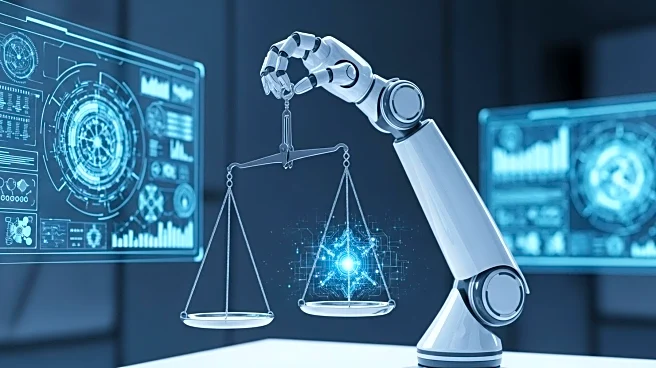What's Happening?
The U.S. labor market is experiencing significant shifts as more individuals delay retirement or return to work after retiring, a trend that is reshaping workforce planning across various sectors. This development is particularly relevant in the context of state and local governments, which are facing challenges in retaining talent due to a potential wave of retirements among baby boomers. The uncertainty in the job market, exacerbated by federal government downsizing and the potential impact of artificial intelligence on white-collar jobs, is prompting governments to reconsider their workforce strategies. Recent reports indicate that many individuals are opting to work part-time in retirement or are 'unretiring' to maintain financial stability and a sense of purpose. This trend is creating opportunities for governments to onboard and retain talent in critical areas such as cybersecurity and technology roles.
Why It's Important?
The shifting dynamics in the U.S. labor market have significant implications for public policy and economic stability. As more individuals delay retirement, the anticipated 'brain drain' in government sectors may be less severe than previously feared, potentially mitigating disruptions in public services. However, the uncertainty surrounding job security, particularly in white-collar professions, poses challenges for workforce planning. The integration of artificial intelligence and automation could lead to significant job displacement, necessitating proactive measures by governments to adapt to these changes. Flexible work arrangements and alternative employment models could help address staffing needs and ensure continuity in service delivery. The evolving retirement landscape also highlights the need for policies that support financial security and career flexibility for older workers.
What's Next?
Governments are likely to explore innovative workforce strategies to address the challenges posed by delayed retirements and job market uncertainties. This may include implementing flexible work requirements, offering part-time roles to retired employees, and leveraging remote work options to attract and retain talent. Additionally, there may be increased focus on reskilling and upskilling initiatives to prepare the workforce for the potential impacts of automation and artificial intelligence. As these trends continue to unfold, policymakers and industry leaders will need to collaborate to develop sustainable solutions that balance economic growth with workforce stability.
Beyond the Headlines
The trend of delayed retirements and 'unretirement' reflects broader societal shifts in attitudes towards work and retirement. Economic pressures, such as rising living costs and healthcare expenses, are influencing individuals' decisions to remain in the workforce longer. This shift also underscores the importance of redefining retirement to accommodate diverse career paths and life stages. As the labor market evolves, there may be increased emphasis on creating inclusive and adaptable work environments that support lifelong learning and career development.












